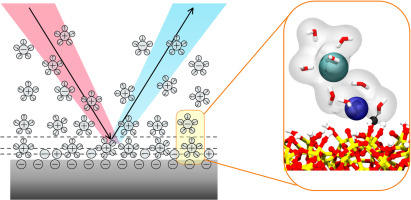Current Opinion in Colloid & Interface Science ( IF 8.9 ) Pub Date : 2018-08-23 , DOI: 10.1016/j.cocis.2018.08.001 Remco Hartkamp , Anne-Laure Biance , Li Fu , Jean-François Dufrêche , Oriane Bonhomme , Laurent Joly

|
Surface charge controls many static and dynamic properties of soft matter and micro/nanofluidic systems, but its unambiguous measurement forms a challenge. Standard characterization methods typically probe an effective surface charge, which provides limited insight into the distribution and dynamics of charge across the interface, and which cannot predict consistently all surface-charge-governed properties. New experimental approaches provide local information on both structure and transport, but models are typically required to interpret raw data. Conversely, molecular dynamics simulations have helped showing the limits of standard models and developing more accurate ones, but their reliability is limited by the empirical interaction potentials they are usually based on. This review highlights recent developments and limitations in both experimental and computational research focusing on the liquid-solid interface. Based on recent studies, we make the case that coupling of experiments and simulations is pivotal tomitigate methodological shortcomings and address open problems pertaining to charged interfaces.
中文翻译:

测量表面电荷:为什么应该将实验表征和分子建模结合起来
表面电荷控制着软物质和微/纳流体系统的许多静态和动态特性,但其明确的测量构成了挑战。标准的表征方法通常会探测有效的表面电荷,这对界面上电荷的分布和动力学的了解有限,并且无法一致地预测所有由表面电荷控制的特性。新的实验方法提供了有关结构和运输的本地信息,但是通常需要模型来解释原始数据。相反,分子动力学模拟有助于显示标准模型的局限性并开发出更精确的模型,但其可靠性受到通常基于经验相互作用的潜力的限制。这篇综述着重于液固界面的实验和计算研究的最新发展和局限性。根据最近的研究,我们得出这样的结论,即实验和模拟的耦合是缓解方法学缺陷并解决与带电接口有关的开放性问题的关键。



























 京公网安备 11010802027423号
京公网安备 11010802027423号